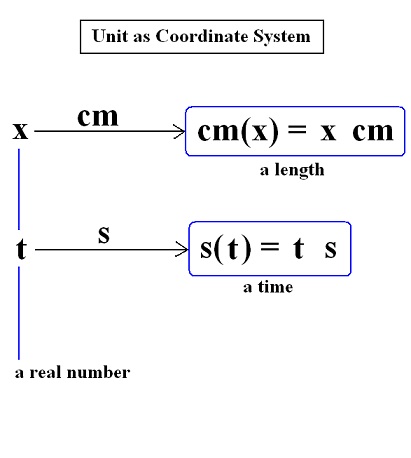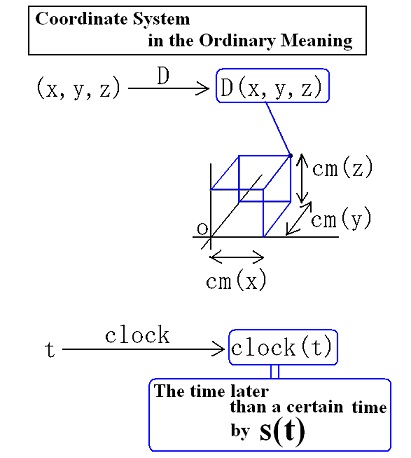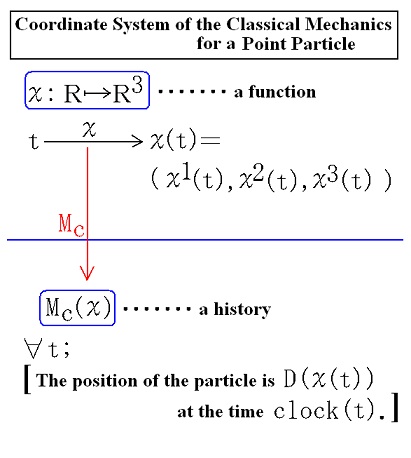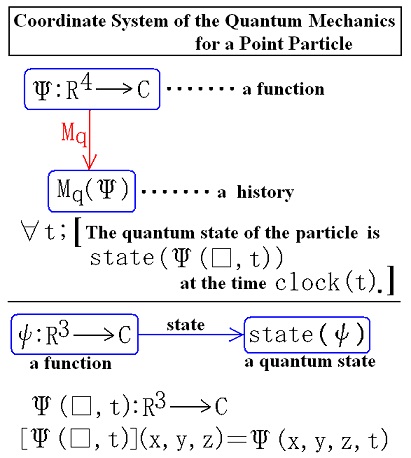
since 2006
Help Sitemap
I use the word ‘coordinate system' in a little broader meaning than the ordinary meaning.
The coordinate system which I say
is a general mapping
which maps a mathematical notion to a physical notion.
Specifically, as the coordinate system of a physical theory,
I think of a mapping
which maps a mathematical notion to a history of the physical system.
For example, a physical unit is a coordinate system in my broad meaning.
It is because the unit of length cm
can be thought of
as the mapping
which maps each real number x to a length x centimeters
and the unit of time s
can be thought of
as the mapping
which maps each real number t to the time t seconds.

By using the units cm and s,
I define the Cartesian coordinate system D and the time coordinate system ‘clock'
as shown in these figures.

D is the mapping
which maps each real row vector (x,y,z)
to a spatial point whose Cartesian coordinate is (x,y,z),
and ‘clock’ is the mapping
which maps each real number t
to the time later by t seconds than the arbitrarily given original time.
Therefore, Both D and clock are coordinate systems in my broad meaning.
As the coordinate systems of the physical theories,
I can mention the coordinate system of the classical mechanics for a particle
and the coordinate system of the quantum mechanics for it.
The coordinate system Mc of the classical mechanics for a particle
is defined as the mapping
which maps each function χ from R to R3
to a history Mc(χ) of the position of the particle
where Mc(χ) is the following proposition.
“For any real number t, the position of the particle is D(χ(t)) at the time clock(t).”

The coordinate system Mq of the quantum mechanics for a particle
is the mapping
which maps each function Ψ from R4 to C
to a history Mq(Ψ) of the quantum state of the particle
where Mq(Ψ) is the following proposition.
“For any real number t,
the quantum state of the particle is state(Ψ(□,t)) at the time clock(t).”
Please notice that in this statement
Ψ(□,t) is a mapping from R3 to C
and is defined by the equation [Ψ(□,t)](x,y,z)=Ψ(x,y,z,t)
and ‘state’ is a mapping which maps each function from R3 to C
to a quantum state
and is a coordinate system in my broad meaning.

---
The content of this article was presented at APS+JPS 2006 Autumn Meeting.